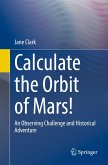Theory of Orbits: The Restricted Problem of Three Bodies is a 10-chapter text that covers the significance of the restricted problem of three bodies in analytical dynamics, celestial mechanics, and space dynamics.
The introductory part looks into the use of three essentially different approaches to dynamics, namely, the qualitative, the quantitative, and the formalistic. The opening chapters consider the formulation of equations of motion in inertial and in rotating coordinate systems, as well as the reductions of the problem of three bodies and the corresponding streamline analogies. These topics are followed by discussions on the regularization and writing of equations of motion in a singularity-free systems; the principal qualitative aspect of the restricted problem of the curves of zero velocity; and the motion and nonlinear stability in the neighborhood of libration points. This text further explores the principles of Hamiltonian dynamics and its application to the restricted problem in the extended phase space. A chapter treats the problem of two bodies in a rotating coordinate system and treats periodic orbits in the restricted problem. Another chapter focuses on the comparison of the lunar and interplanetary orbits in the Soviet and American literature. The concluding chapter is devoted to modifications of the restricted problem, such as the elliptic, three-dimensional, and Hill's problem.
This book is an invaluable source for astronomers, engineers, and mathematicians.
The introductory part looks into the use of three essentially different approaches to dynamics, namely, the qualitative, the quantitative, and the formalistic. The opening chapters consider the formulation of equations of motion in inertial and in rotating coordinate systems, as well as the reductions of the problem of three bodies and the corresponding streamline analogies. These topics are followed by discussions on the regularization and writing of equations of motion in a singularity-free systems; the principal qualitative aspect of the restricted problem of the curves of zero velocity; and the motion and nonlinear stability in the neighborhood of libration points. This text further explores the principles of Hamiltonian dynamics and its application to the restricted problem in the extended phase space. A chapter treats the problem of two bodies in a rotating coordinate system and treats periodic orbits in the restricted problem. Another chapter focuses on the comparison of the lunar and interplanetary orbits in the Soviet and American literature. The concluding chapter is devoted to modifications of the restricted problem, such as the elliptic, three-dimensional, and Hill's problem.
This book is an invaluable source for astronomers, engineers, and mathematicians.
Dieser Download kann aus rechtlichen Gründen nur mit Rechnungsadresse in A, B, BG, CY, CZ, D, DK, EW, E, FIN, F, GR, HR, H, IRL, I, LT, L, LR, M, NL, PL, P, R, S, SLO, SK ausgeliefert werden.


